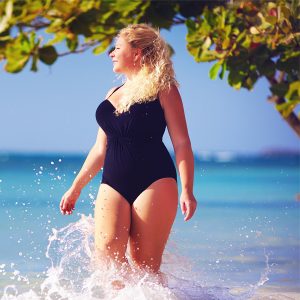 Best Treatment for Lipedema
Best Treatment for Lipedema
There is no known curative therapy for lipedema. The primarily focus of treatment is to reduce its related lower extremity symptoms, disability, and functional limitations to improve patients’ quality of life, as well as preventing disease progression.
There are 2 treatment types:
- Conservative
- Surgical Intervention
Conservative Therapy
Maintaining a healthy lifestyle through diet and exercise and other supportive measures, such as psychosocial therapy and orthopedic counseling can alleviate some lipedema symptoms such as heaviness, pain, and secondary swelling. However, these benefits are short-lived, usually requiring repeat treatment within days.
Surgical Intervention
Liposuction is the best treatment for Lipedema. Commonly used liposuction methods for lipedema are tumescent liposuction, Water Assisted Liposuction (WAL) and Power Assisted Liposuction (PAL) . In tumescent liposuction, tumescent is infused in the subcutaneous tissues to cause the fat cells to swell and vessels to constrict; then blunt micro-cannulas are used to suction the fat.
Marcia Byrd, MD, Lipedema Liposuction Specialist
Dr. Marcia Byrd at Lipedema Surgery Center has performed thousands of successful lipedema liposuction procedures. She only treats women with lipedema, as she has devoted her entire practice to helping them to improve their lives. Performing these surgeries for lipedema is the procedure she enjoys the most, because it gives her great pleasure to see the look in her patients’ eyes after they see their results.
Results Include:
- Improvement of Quality of Life
- Improved Aesthetic Appearance
- Decreased Pain in Lower Extremities
- Mobility Improvement
- Improved self-confidence
To See Before & After Photos of Dr. Byrd’s Patients +
Candidates for Lipedema Liposuction Surgery
Patients with an abnormal accumulation of fat in specific areas of the body such as calves, legs, thighs, hips, trunk, and arms might suffer from Lipedema. The sign and symptoms of lipedema include:
- Symmetric enlargement of both legs bilaterally between the hips and ankles
- A disproportion of legs in comparison to the knees, the disproportion of hips, stomach, or buttocks
- Legs and thighs with easy bruising
- Pain in the ankles, legs, buttocks, or thighs
- The fat that accumulates and pushes over the knees
- The fat accumulates over the legs and thighs even when there has been extreme weight loss in the upper body.
Insurance Coverage for Lipedema
Lipedema is a condition that affects a significant number of women worldwide, causing pain, swelling, and mobility issues. Dr. Marcia Byrd uses lymphatic sparing liposuction, a specialized technique to reduce the risk of lymphatic injury. This is an effective treatment option for managing the symptoms of lipedema. The question of insurance coverage for this procedure has been a source of frustration for many patients. One of the main reasons for this is that insurers currently use an inappropriate cosmetic code for lipedema surgery.
Lipedema Insurance coverage for lipedema surgery has become more attainable recently. Learn more about current lipedema liposuction insurance coverage+
About the Procedure
Liposuction is designed to be performed as an outpatient procedure using local anesthesia. Thus, the potential complications from general anesthesia and a costly hospital stay can be avoided. In addition, since the patient is awake, he or she is able to sit or stand during the procedure, allowing Dr. Byrd to check the status of the patient and progress of the contouring.
Before the procedure begins, areas of excess fat are identified and injected with a large amount of local anesthetic fluid to prevent pain. Next, small incisions are made in the skin to gain access to the fatty areas. These incisions are usually about ½ inch long or less. Specially designed hollow metal tubes are inserted through these incisions and passed through the subcutaneous tissues to reach the area of excessive fatty deposition. Typically, the incisions (ports) are placed to allow approaching the fatty area from more than one angle to help assure a more even removal of the fat. The ports can be placed at a significant distance from the fatty area to insure they are hidden in natural skin creases or areas that are covered with clothing. High suction is placed on the hollow tube, and fat cells are suctioned out of the area by passing the tube back-and-forth many times.
Aftercare and Recovery
After undergoing lipedema surgery with Dr. Byrd, it is advised to take a few days to completely rest, recover, and elevate your legs as much as possible. Within the first few weeks following lipedema surgery many patients can return to desk work. During your follow-up appointments, Dr. Byrd will help guide you on when you can add in prolonged standing time and more vigorous activities.
Compression Garments
- Stabilizing your tissues in a special compression garment increases your comfort and ability to get around. Your tissues will be more comfortable after Liposuction when they are not jiggling around.
- Compression also helps control swelling and bruising. Our patients wear this for about 2 weeks full-time and then part time for a third week.
- Different styles are available for the various zones treated by the Liposuction. Girdle-like pants are used for the buttocks and thighs. Hooks and zippers on side openings assist in getting the garments on and taking them off.
- At the end of your first two weeks of recovery, Dr. Byrd will evaluate your recovery. In addition, you can begin returning gradually to your normal exercise routine. At your follow-up she will talk about your routine and advise you when you can return to each activity.
Atlanta’s lipedema specialist, Dr. Marcia Byrd treats patients for lipedema throughout the United States, Canada, and internationally. Her practice is located in the Atlanta Metro area of Roswell, Georgia. If you would like to make an appointment to be diagnosed and treated for lipedema, call (770) 587-1711 and schedule a consultation. Be the best you can be and live a full life – there is no reason to wait!
